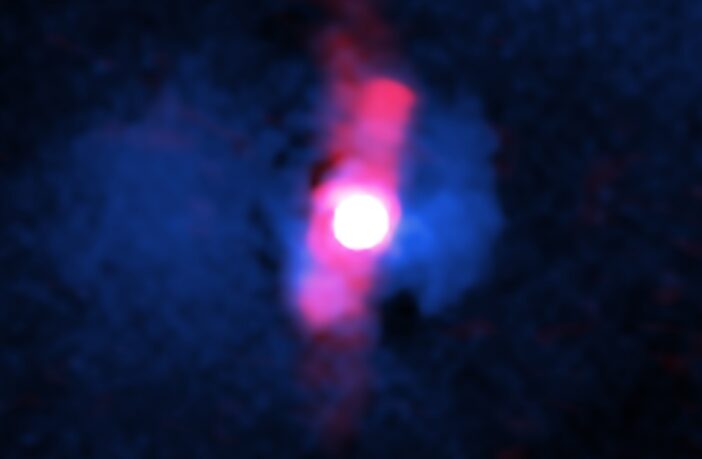An international team of students, including a PhD student from The Open University (OU) have revealed that a brilliant supermassive black hole is not living up to expectations in a new study using NASA’s Chandra X-ray Observatory.
The study revealed that although the supermassive black hole is responsible for high levels of radiation and powerful jets, this giant black hole is not as influential as many of its counterparts in other galaxies.
Lucy Clews, an Astronomy PhD student at the OU, was a co-author of the study. Lucy explained:
“The giant black hole is generating a lot less heat than most of the others in the centres of galaxy clusters. This allows the hot gas to rapidly cool down and form new stars, and also act as a fuel source for the black hole.”
Lucy and Thomas Braben, a PhD student at the University of Nottingham, used the Chandra X-ray Observatory to look at the closest quasar to Earth that is in a cluster of galaxies. Known as H1821+643, this quasar is about 3.4 billion light-years from Earth. Quasars are a rare and extreme class of supermassive black holes that are furiously pulling material inwards, producing intense radiation and sometimes powerful jets.
Much less is known about how much influence quasars in galaxy clusters have on their surroundings.
Chandra was used to study the hot gas that H1821+643 and its host galaxy are shrouded in. The bright X-rays from the quasar, however, made it difficult to study the weaker X-rays from the hot gas.
Using Chandra, the team found that the density of gas near the black hole in the centre of the galaxy is much larger, and the gas temperatures much smaller, than in regions farther away. Scientists expect the hot gas to behave like this when there are little or no sources of energy to prevent the hot gas from cooling down and flowing towards the centre of the cluster.
The researchers determined that hot gas equivalent to about 3000 times the mass of the Sun per year is cooling to the point that it is no longer visible in X-rays. This rapid cooling can easily supply enough material for the 120 solar masses of new stars observed to form in the host galaxy every year, and the 40 Sun’s consumed by the black hole each year.
“While this black hole may be underachieving by not pumping heat into its environment, the current state of affairs will likely not last forever,” said co-author Thomas Braben, PhD at the University of Nottingham. “Eventually the rapid fuel intake by the black hole should increase the power of its jets and strongly heat the gas. The growth of the black hole and its galaxy should then drastically slow down.”
Lucy concluded:
“I would never have imagined that my name would be on a paper this early in my career, I hope it can inspire other students to also take up Astronomy.”



